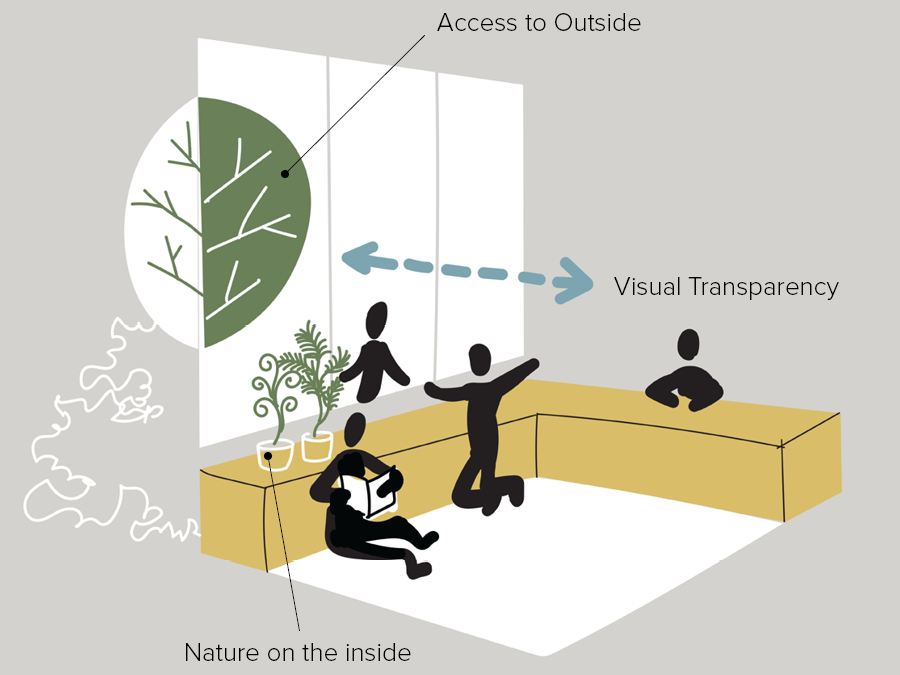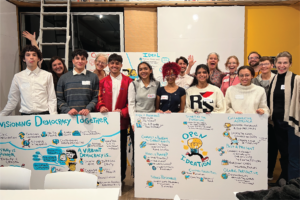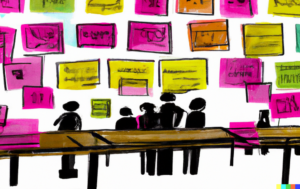Connecting to Nature is Essential to Our Well-being
Key Points
-
When we ask people from around the world what is most important to them, a connection to nature consistently rises to the top.
-
Even in places of extreme weather, people desire to spend time outdoors.
-
Schools can approach “how might we connect our learning to nature” as a design problem.

Our world appears painfully divided, and yet, when we ask educational visioning workshop participants around the world what is most important to them, a connection to nature consistently rises to the top.
While engaging a group of elders regarding the design of the Piqqusilivvik Inuit Cultural Learning Center in Clyde River, Nunavut, I asked them: “what was most important to you?” Given the harshness of the Arctic Circle, I assumed that the answer would relate to shelter.
To my surprise and delight, the answer, in Inuktitut, translated into English, was an enthusiastic “being out on the land!”
We were meeting inside a conference room, and I asked if they would like to finish our meeting at the site. The agreement was unanimous, and as we got into pickup trucks and headed out into the forest, I sensed a powerful feeling of purpose and joy in the group.
We stood in a circle on the site for the new Cultural Learning Center and school, and talked about what was important. Because of the mist, we couldn’t see far. We were in a kind of misty wonderland. Slowly, in a lovely natural rhythm, the elders shared their thoughts about wind, snow and sun.
Providing leadership in the alignment of the vision, educational program and physical environment is our most essential role at Fielding International, but at that moment, I didn’t feel like a leader, but a much-humbled listener. Each design idea that I had carried to the project, including the location of the entry, use of windows, the outdoor animal skin processing area, and main utility connections proved to be ill-suited.
For the Inuit, the connection to nature is a foundation of the past and present culture.
Randy Fielding
“Mr. Fielding, your sketches are very nice, but it’s best not to put the entry there, because of the wind, for much of the year, the entry will be covered in 3 meters of snow.”
“Mr. Fielding, your ideas are very smart, but it’s best not to put the outdoor tanning area there, because of the wind, the smell will be very bad inside.”
“Mr. Fielding, we appreciate your good thinking, but it’s best not to put the heating gas line feed there, because of the wind, the smell will be bad inside.”
After their gentle feedback, the elders proceeded to describe a vision and educational program that included Inuit Qaujimajatuqangit (traditional Inuit values, knowledge, behavior, perceptions and expectations), child-rearing, throat singing, and drum dancing.
To close our meeting, we held hands and ended with a prayer for the project, feeling embraced and blessed by the forest around us.
For the Inuit, the connection to nature is a foundation of the past and present culture. What does it mean for their future? If we circle back to the top skills identified by the World Economic Forum from the initial blog, which include complex problem-solving, working with people, self-management, innovation, originality, and critical analysis–where does a connection to nature fit in? This is a design challenge that local communities can wrestle together, and outdoor learning Design Patterns can be a tool to help in that process.
Find Indoor-Outdoor Connections and many other related ones at SchoolPatterns.com.








0 Comments
Leave a Comment
Your email address will not be published. All fields are required.